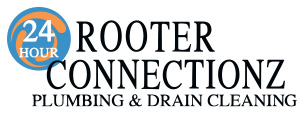The world of plumbing is one that features a unique interplay between clients and professional plumbers. While there are certain jobs that should only ever be carried out by professionally-trained plumbers, there are other simple plumbing tasks around the home that homeowners should handle for themselves — basic stuff like clearing drains, preventing clogs and ensuring you know the location of various shut-off valves, for instance.
At 24 Hour Rooter Connectionz Plumbing & Drain Cleaning, we’re happy to work directly with clients to assist them with any of their plumbing needs — including some of our more handy clients who like to try and DIY as many of their home needs as possible. While we encourage this in many cases and will provide support where we can, we’ve also seen situations where DIYers make costly mistakes that could have been avoided by simply calling our plumbers. Here are some of these mistakes to avoid — if you’re in these situations, it might be best to give our team a call.
Overtightening Plumbing Connections
Many home DIY plumbing tasks will involve connections, whether from one section of piping to another or from the supply end of a pipe into a fixture like a sink. When connecting these things, it’s very important that you tighten them as much as possible — but not so much that you break the products themselves.
If this happens, this means replacement parts will be necessary and likely also means you’ll need to get a professional plumber involved to ensure the connection is watertight and functional once more. Overtightening can also damage components like gaskets, which result in leaking fixtures that you’ll need to repair or replace before getting back to business as usual.
Using Drain Cleaners Too Often
If your drains are having minor clog or buildup issues, your first option here should not be chemical drain cleaners. While these tools can be effective on some occasions, they can cause damage to the internal mechanisms of your fixtures over time and should only be used in situations where more natural methods have failed.
Rather, your first attempt should be using a plunger, drain snake or some other barbed drain cleaning tool that will not eat away at your pipes. If these methods don’t do the trick, call on our team of professional plumbers at 24 Hour Rooter Connectionz Plumbing & Drain Cleaning.
Handling a Major Job Without Spare Parts
One quick way to tell an experienced DIY homeowner from a newbie in the plumbing world: Do they have a collection of spare parts handy? Plumbing is a world that requires precision; the more precision you have in your work, the fewer problems you’ll run into.
If you plan on tackling a new plumbing project on your own and don’t want to call our team of professionals, make sure that you’re carrying out all tasks with several spare parts ready for use. This will include standard items like washers and gaskets, but also more specific items like shut-off valves, air vents and piping connectors.
Using Improper Tools
Down similar lines, one of the most common DIY mistakes we see involves using the wrong tools for a job. If you’re trying to remove a corroded nut with a wrench when it’s best done with a socket wrench, you’ll end up causing significant damage to the nut and likely also scratch or warp the surface of your fixture in some way.
If you’re going to take on plumbing projects around your home, make sure that you’re using the appropriate tools for each task — this includes both standard hand tools and more advanced tools like pipe cutters, drain snakes, crimpers and saws. If you have questions here, call our team; if you’re inexperienced with using a recommended tool, this is one of those situations where leaving the job to the pros might be the right call.
Confusing Wyes, Tees and Elbows
Drain fittings are often an area DIYers try to attend to on their own, but they will commonly mix up the difference between wyes, tees and elbows. The primary function of all three is to join different pipes together — that said, there are key differences between them:
- Wyes: Wyes feature a circular base that is connected to three different hoses, making them best suited for use in sinks.
- Tees: Tees are similar to wyes but feature a more pointed joint between the circles’ connection points.
- Elbows: Elbows are used when you want to turn a pipe at an angle rather than allow it to continue its original direction.
If you’re unsure of the difference between wyes, tees and elbows, our team can help — or, better yet, invest in some reliable reference guides so that you’ll know for next time you’re tackling a job around your home.
Using the Wrong Tape (Or Using the Right Tape Incorrectly)
Another common need within the plumbing world is the use of tape, including Teflon tape that’s often wrapped around various pipe threads. This tape must be wrapped in the right direction — but some DIYers wrap it backward, inadvertently causing major leaks and other issues. If you’re going to be using Teflon tape on your own, make sure that you double check the direction of the wraps (toward the pipe threads rather than away from them) both before and after you’ve completed the job — this will ensure long-term effectiveness.
In addition, it’s vital to ensure you’re using the right tape to begin with. Thin white or thick pink thread tape should be used for fittings that carry water; yellow gas-rated tape should be used for threaded gas line connections. Thread tape should never be used on compression or flare fittings, either.
For more on avoiding common DIY plumbing mistakes, or to learn about any of our drain cleaning or other plumbing services in Utah, speak to the staff at 24 Hour Rooter Connectionz Plumbing & Drain Cleaning today.


